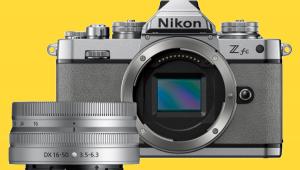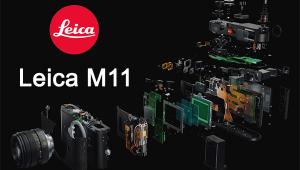That is a very nice camera and the picture was taken from it will be very sharp.
http://www.friv2gaming.com | http://www.friv4gaming.com
Olympus OM-D E-M1 Mirrorless Camera Review
The new Olympus OM-D E-M1 is the follower of the first OM-D, the proper and full name having been the “OM-D E-M5.” The E-M1 incorporates many of the E-M5 advantages, the famous five-axis image stabilizer being one of them. This image stabilizer is based on sensor-shift technology and allows the user to shoot a stabilized image with every lens system mounted to the camera.





The retro design of the E-M1 is based on the classic (analog) OM SLR system. The massive body looks very robust, but is still very handy because it is noticeably smaller than full-frame flagship cameras made by Nikon and Canon, and even smaller than the Olympus Four Thirds system E-5. The OM-D E-M1 is also designed as a follower of this camera, because Olympus will no longer offer new Four Thirds models. This may also be the reason why Olympus emphasizes the fact that the OM-D E-M1 is able to use all Four Thirds lens systems with the help of the optional MMF-3 adapter.
The camera has an angular design with a viewfinder that looks like the classic mirror reflex finder with a penta-prism, but instead has an electronic viewfinder with an extremely high resolution of 2.36 million RGB dots. This viewfinder is really superb and allows the user to focus manually with ease.
In addition, the camera has a large 3” LCD on the back, which is also a high-resolution screen with 1,037,000 RGB dots. The monitor can be flipped up- and downward, but can’t be rotated to the side or to the front.
One of the most important differences between the old and the new OM-D is the combination of a phase detection AF with a contrast detection AF system in the new model. This new AF system is called “Dual Fast AF” and was extremely fast in our tests, showing extremely short shutter delay results.
The camera is extremely handy: two dials allow the user to change image parameters very fast and efficiently; they are supported by a four-way control field on the back and a lot of function buttons on the back and the top of the camera. There are some features that are a little unusual, but very handy. The “live bulb” mode, for example, allows the user to check the image on the preview screen even while shooting in bulb mode. The photographer can choose the display interval as well. Night scenes or “light painting photos” are very easy to shoot with the new Olympus.
On the top there’s a special function button that shows a gradation/tone curve on the screen. Just as in Adobe Photoshop, one can change this curve and therefore change the image behavior of the camera in respect to the highlight and shadow reproduction before shooting. This button is also called “Fn2” and the user can define a different function for it by using the screen menu. The camera is able to record Full HD video.
Comments On Still Image Quality
Color: The OM-D E-M1 creates images with very precise but slightly undersaturated colors—just like nearly all Olympus system cameras. The color level is very good (99.96 percent) but may be lower in saturation than users anticipate. The low saturation is one reason for the excellent color differentiation of full and rich colors, like the red in the spools in our test box shot, which are full of details and clearly noticeable. The automatic white balance system tends toward cooler colors. The skin tones are nearly perfect, but the portrait shot is also slightly underexposed (P mode, ISO 200, continuous lighting).

Sharpness: The camera delivers very crisp and clean images. It achieves a maximum of 3107 lines per picture height, very good for a camera with a nominal resolution of 3456 lines per picture height. When taking JPEG images the sharpness filtering of the new TruePic VII image processor is decent and doesn’t show exaggerated or artificial sharpness results. The portrait shot and the standard test box shot displayed a bit softer character than images taken with previous Olympus cameras. Nevertheless, the image quality and the reproduction of details is very good.
Noise: The new Olympus showed an excellent performance in our noise tests. The luminance noise level starts on a little higher level than in images taken with cameras with APS-C-sized image sensors, but the noise level increases very slowly. It starts with a y-factor of 0.71 percent at ISO 200 and crosses the 1.0 percent “frontier” only at ISO 6400. Even the highest ISO mode of 25,600 shows lower luminance noise (1.8 percent) than many APS-C-sized cameras.
The OM-D E-M1 uses intense anti-noise filtering to reduce color noise, but it works quite well. The typical “anti-noise filtering artifacts” and noticeable reduction of image details don’t start to get visible until ISO 6400. However, it gets really annoying at ISO 25,600.
The Olympus also showed a very good performance in the dynamic range tests. It achieves a maximum of 11.5 f/stops and keeps a high level of more than 10 f/stops even at ISO 6400. With higher ISO speed settings the dynamic range result drops drastically.
Comments On Video Functions
The camera allows the user to shoot video in Full HD mode with 1920x1080 pixels and with 30 (29.97) frames per second. The files are saved as QuickTime MOV files with H.264 compression technology and use high bit rates of 24 Mbps. The camera offers an additional video mode which is based on MJPEG for lower resolution videos with 1280x720 pixels. These files and the MJPEG compression are more manageable for older/slower PCs.
The camera offers an additional shutter release button on the top.
This isn’t as handy as it sounds.
The user has to bend/distort the forefinger considerably when moving from the standard shutter release button back to video button. A second button on the back, which is activated by the right-hand thumb, is more comfortable.
When recording video the Olympus OM-D E-M1 allows the user to access all standard exposure modes, which is very handy. The camera also allows manual correction of the sound level and offers an automatic “wind noise” filtering mode for better sound recording. For higher quality audio recording it uses an external microphone. You will find a standard 3.5mm jack on the left-hand side of the body for standard external microphones, which can be mounted on the accessory shoe on the top of the new Olympus.
The camera was tested with the M.ZUIKO DIGITAL ED 12-50mm 1:3.5-6.3 EZ kit lens. This lens has an Electromagnetic Zoom (“EZ”) mechanism and allows for very smooth zooming while recording video. The photographer can also change focus and focal length with two large lens rings. To switch between manual and motor zooming the photographer has to push the first lens ring (with the “L-Fn” and the “MACRO” buttons) forward and backward.



Comments On Video Quality
The camera produced high-quality videos. The resolution result of 657 lines in video height is a good result and our test clips were very crisp and clear. There are some minor aliasing effects noticeable, but they are on a very low level and the video results are better than clips taken with other D-SLRs.
The color reproduction is also very good. Just like in photo mode, the Olympus OM-D videos tend a little toward cooler colors and the colors look a bit undersaturated. This is noticeable in portrait video shots as well as in landscape video shots. The overall color errors are on a very low level.
However, we did encounter some issues: the test clip taken in P mode (ISO 200) and using the motor zoom showed that the camera readjusts the exposure settings while zooming and seems to react in a “bumpy” and wavering fashion, making changes of the exposure settings clearly visible.
The dynamic range results in video mode are similar to dynamic range results in photo mode. The Olympus OM-D created videos with a maximum of 11 f/stops in video mode.
The Olympus OM-D E-M1 (body only) has a list price of $1399.99.
Scorecard
Pro
+ Massive body, classic/retro design SLR
+ Very crisp images with high resolution
+ Very fast AF system; high-speed burst mode with up to 10 frames per second in full resolution
+ Integrated and very powerful image stabilizer works with every lens system mounted on the camera
+ EVF with extremely high resolution; handy swivel LCD
+ Wi-Fi and Bluetooth modules
Con
- Swivel monitor not fully articulated
- Missing built-in flash system, but very compact small flash supplied
For more information, visit www.olympusamerica.com.
Image Tech is where we publish web-exclusive lab reports on cameras. To read the reports please go to the Shutterbug homepage at www.shutterbug.com and click on the Image Tech tab on the top navigation bar. New reports are published frequently, so check Image Tech for updates.
Lab results and test images by BetterNet, our TIPA-affiliated testing lab. Edited by George Schaub.
- Log in or register to post comments


















































